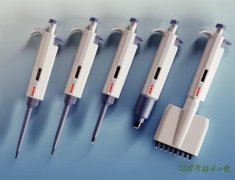TLC Stains
Iodine
The plate can be stained with iodine. This can be achieved rapidly, by shaking the plate in a bottle containing silica and a few crystals of iodine. The iodine will stain any compound that reacts with it and so is especially good for visualizing unsaturated compounds. Most spots show up within a few seconds, but the stain is not usually permanent.
UV light
The plate can be viewed under a ultraviolet lamp to show any uv-active spots.
Dipping Solutions:
The plate can be treated with one of the reagents listed below and then heated to stain the spots. The reagent can be sprayed onto the plates, but this technique is quite hazardous and it is more effective for them to be dipped in the reagent. To do this, first let the tlc solvent evaporate, then holding the edge of the plate with tweezers, immerse the plate as completely as possible in the stain and remove it quickly. Rest the edge of the plate on a paper towel to absorb the excess stain before heating carefully on a hot plate or with a heat gun, until the spots show. This method is always permanent and should be done last. When glass plates are used the spots can sometimes be seen more clearly from the glass side of the plate.
p-Anisaldehyde
Preparation: anisaldehyde (15 g) in ethanol (250 ml) + conc. sulfuric acid (2.5 ml).
Good general reagent, gives a range of colors. Carbohydrate
Bromocresol green: carboxylic acids
Preparation: 0.3% in 1:4 water-methanol
add 8 drops of 30% NaOH/100 mL
carboxylic acids stain yellow-green on a blue background.
Ceric Ammonium Sulfate Spray
Preparation: 1% cerium (IV) ammonium sulfate (CAS) in 50% phosphoric acid.
Vinca alkaloids (Aspidospermas).
CAM
Preparation: 400ml 10% H2SO4 (aq.) , 10g ammonium molybdate , 4g cerric ammonium sulfate
peptides
Ceric Sulfate (Ce(SO4)2)
Preparation: 15% aqueous sulfuric acid saturated with ceric sulfate.
Fairly general, gives a range of colors.
Distilled Water Spray
Spots turn translucent or opaque while background of plates turns clear.
2,4-DNP
Preparation: 2,4-dinitrophenylhydrazine (12 g) + conc. sulfuric acid (60 ml) + water (80 ml) + ethanol (200 ml).
Mainly for aldehydes and ketones, gives orange spots.
Dragendorff Reagent
Preparation: Solution A: 1.7 g basic bismuth nitrate in 100 ml water/acetic acid (4:1). Solution B: 40 g potassium iodide in 100 ml of water. Mix reagents together as follows: 5 ml A + 5 ml B + 20 ml acetic acid + 70 ml water. Spray plates, orange spots develop. Spots intensify if sprayed later with HCl, or 50% water-phosphoric acid.
Good for phenols.
Ferric Chloride Spray
Preparation: 1% Ferric (III) Chloride in Methanol/water (1:1).
Good for phenols.
Iodoplatinate
Preparation: 10ml 5% PtCl2 20ml H2SO4 50ml H2O
alkaloids
Ninhydrin
Preparation:
200 mg ninhydrin 95 ml butanol 5 ml 10% AcOH Comments:
Good for amines.
(250 ml).
Good general reagent, gives blue-green spots.
Sulfanilic Acid Reagent (Diazotized), Pauly's Reagent
Preparation:
Solution A: 0.5% sulfanilic acid in 2% HCl.
Solution B: 0.5% NaNO2 (nitrite) in water
Solution C: 0.5% NaOH in 50% ethanol
Mix equal volumes of A and B and spray TLC plates. Warm sprayed plate with a heat gun if necessary. Spray plates with
solution C.
phenolic compounds turn orange or yellow with this reagent.
Sulfuric Acid
Preparation: 5% sulfuric acid in methanol.
This reagent is usually sprayed on the TLC.
Vanillin
Preparation: vanillin (15 g) in ethanol (250 ml) + conc. sulfuric acid (2.5 ml).
Good general reagent, gives a range of colors.
Others
Ceric Ammonium Nitrate
Vanadium Oxinate
Silver-Iodine
Formaldehyde-Phosphoric Acid
Alizarine
Ferric chloride-Potassium Ferrocyanide
Vanillin-KOH
p-Nitrophenyl diazonium fluoroborate
Morine
p-aminobenzoic Acid
2,3,5-Triphenyltetrazolium
p-Anisidine-Phthalic acid
Antrone
Naphthoresorcinol
Cupric Acetate-Potassium Ferrocyanide
Ammonia
Ferric chloride
Benedict
Cobal chloride
Lead tetracetate
N,N-dimethyl-p-phenyldiamine
Ferrous sulfocyanate
Diphenylamine-Zinc chloride
3,5-Dinitrobenzoic Acid
Kedde
Magnesium acetate
Ferric Hydroxamate
Antimonium Chloride
Libermann-Burchard
Sodium Nitroprussiate-Sodium Hydroxide
1 什么是扫描电子显微镜(SEM) Scanning Electron Microscope(SEM)扫描型电子显微镜是由真空系统、 高压电源、高灵敏度增幅器获取样品表面图像的...

环己烷(CYH)、环己酮(CYC)、二丙酮醇(DAA)、四氢呋喃(THF)、二甲基甲酰胺(DMF)、二甲亚砜(DMSO)、甲基丙烯酸甲酯(MMA). (A)酯类 ESTERS 乙酸甲酯 MA...

Two-dimensional thin-layer chromatography in the analysis of secondary plant metabolites ukas z Ciela , Monika Waksmundzka-H ajnos , Drugs, derived from medicinal plants, have been ...

量程的调节 调节量程时,如果要从大体积调为小体积,则按照正常的调节方法,逆时针旋转旋钮即可;但如果要从小体积调为大体积时,则...